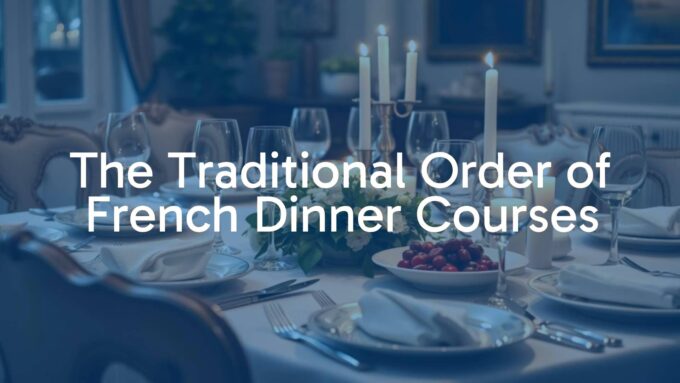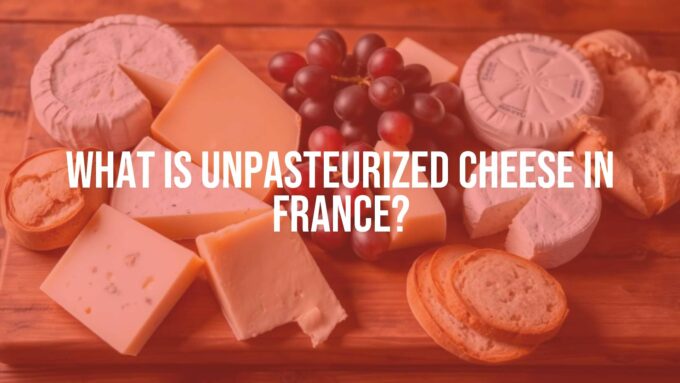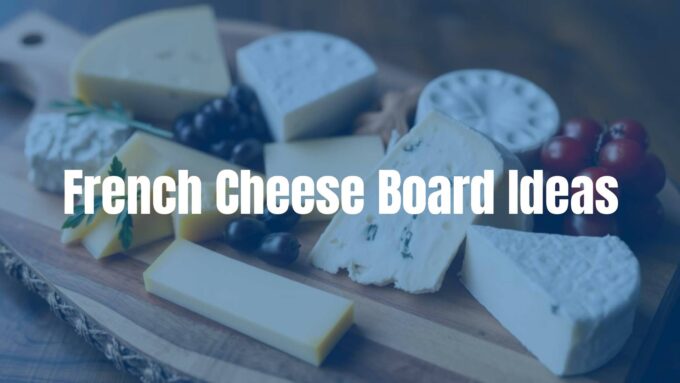A French cooking terms glossary is a helpful guide that explains the main words and phrases used in French kitchens. This list does more than just translate words. It helps cooks understand the special techniques, ingredients, and recipes that make French food unique. Whether you cook at home or want to work in a professional kitchen, knowing these terms is your first real step toward understanding French cooking. It helps you follow recipes more easily, talk with other cooks, and appreciate how much history goes into classic French dishes. Think of it as learning a new “kitchen language.”

What Is a French Cooking Terms Glossary?
A French cooking glossary is a list of French words and phrases you often find in recipes and kitchens, especially in French cooking. The list includes knife cuts, cooking methods, sauces, ingredients, and types of dishes. It’s more than a dictionary. It’s a learning tool that helps make sense of French terms in the kitchen, which may look hard at first. With clear meanings and sometimes how to say them, the glossary helps make sure you understand recipes and can cook the dishes the right way.
French words appear often in kitchens around the world because French cooking has a big influence everywhere. This glossary explains key terms and how to pronounce them, which helps cooks who aren’t fluent in French. If you want to get better in the kitchen, having this glossary close by is very useful.
History of French Terms in Cooking
French cooking words are common in kitchens because French chefs set many standards in food preparation and cooking style, especially starting in the 1600s. They created cooking systems and approaches that spread to other countries. Early on, French chefs wrote down their methods and named dishes and techniques in French, and cooks everywhere learned these terms. Even now, many kitchen words we use started in France, and understanding them gives you a basic knowledge of Western cooking. French laid down the main rules, and their words are now common in kitchens across the world.
Why French Cooking Words Matter in Professional Kitchens
In a busy restaurant or professional kitchen, clear and quick communication is very important. French cooking words give cooks and chefs a shared language. When a chef says “mise en place” or asks another to “sauté” vegetables, everyone knows exactly what to do. This shared understanding helps the kitchen run smoothly and safely.
Also, knowing French cooking words shows you understand basic cooking traditions and skills. It lets chefs work together, keep up with standards, and talk in detail about food prep. Talking about the texture of a “velouté” or what a “roux” does means you share in that tradition. It’s not just about sounding smart-it’s about being clear and professional.
Why Learn French Cooking Words?
Learning French cooking vocabulary does more than help you read recipes. It makes you a more skilled and careful cook. By learning these words, you start to see the reasons behind each recipe step, and your cooking will be more thoughtful and skilled. Cooking isn’t just following directions, it turns into understanding the whole process.

Knowing these words also connects you with other chefs and people who love food. You join a bigger group that can talk about and share ideas more easily. Once you pick up these core words and ideas, it’s easier to try more new skills and dishes.
Helps You Understand Recipes
One of the fastest ways to improve at reading recipes is by understanding French culinary words. These words often describe specific ways to cook, cut, or mix food. For example, “sauté” means to cook quickly in a bit of fat, with the food moving around the pan (the word means “to jump” in French). This gives you a clear picture of the task-something a regular translation might not show.
Words like “mirepoix” (a mix of chopped vegetables like onions, carrots, and celery) or “roux” (a paste used to thicken sauces) are building blocks in many dishes. If you learn these words, following recipes will feel much easier, and your cooking will improve.
Improves Communication in Kitchens
Whether you’re learning in a classroom or working in a restaurant, using French cooking terms makes talking about food faster and clearer. Being able to say a sauce should be “nappé” (coated) or that onions need to be “émincer” (thinly sliced) saves time and avoids confusion.
Knowing these words also shows you take cooking seriously, and lets you speak confidently with others about food prep. Teams that use the same words work together better and have fewer mistakes in the kitchen.
How to Use This French Cooking Terms Glossary
This glossary is meant to be a useful tool to help you learn as you cook. You can use it whenever you see an unfamiliar word in a recipe, on a cooking show, or in a book. Keep it handy on your phone or computer, or print it out for your kitchen. If you’re not sure what a term means, look it up before moving on with your cooking.
You can also use it to slowly add new words to your vocabulary. Try learning a few new words each week. Practice saying them out loud and think about them while you cook. Use them when you talk about food with friends or family. Over time, these words will feel natural and make you a better cook, especially with French-style recipes.
Tips for Saying French Cooking Words
French pronunciation might seem tricky, but with some practice, you can get close enough. Most French words use soft “r’s,” sometimes made in the back of your throat, and often the “s” at the end of a word is silent. If a word ends with “e,” it’s often a soft sound. For example, “roux” is said like “roo” and “sauté” is like “soh-TAY.” Listen to how native speakers say French cooking words, either online, in apps, or in videos, and repeat them out loud for practice.
How to Remember French Culinary Words
Remembering these words can feel hard, but it gets easier if you use them while cooking. For example, if you learn the word “bain-marie” (a hot water bath for gentle cooking), try using it next time you make pudding or custard. Making a new dish that uses “béchamel” will help you understand and remember what a “roux” is.
Writing flashcards for each word, practicing every so often, and grouping similar words (like different types of sauces or cuts) helps too. Use as many senses as you can-say the word, picture the action, and tie it to a smell or taste if possible. Don’t be afraid to get a word wrong at first-the more you try, the better you’ll get.

French Cooking Terms Glossary: Simple Definitions and Pronunciations
This section lists key French cooking words, their simple meanings, and how to say them. These terms are the basics you’ll see again and again in French recipes and kitchens. Look for links between them-like how one sauce or cut leads to another-to help you understand the big picture.
| Term | Pronunciation | Meaning |
|---|---|---|
| Abaisser | ah-beh-SAY | Roll out dough with a rolling pin to a set thickness. |
| Blanchir | blahn-SHEER | Briefly boil food, then cool it in ice water-used for veggies or peeling. |
| Émincer | eh-man-SAY | Slice something (like onions) into thin pieces. |
| Mijoter | mee-zhoh-TAY | Simmer food slowly just under boiling point for deep flavor and tender texture. |
| Béchamel | bay-shah-MEL | Creamy white “mother” sauce made with milk and a white roux. |
| Espagnole | ess-pah-NYOL | Brown sauce made with browned flour, stock, and vegetables, used as a base. |
| Velouté | veh-loo-TAY | Light, smooth white sauce made with clear stock and a roux. |
| Hollandaise | hol-ahn-DEZ | Smooth yellow sauce made from egg yolks, butter, and lemon or vinegar. |
| Roux | roo | Flour and fat cooked together to thicken sauces or soups. |
| Julienne | zhoo-lee-EN | Slice food into thin matchstick shapes. |
| Brunoise | broo-NWAHZ | Dice foods into small, even squares-smaller than most cuts. |
| Chiffonade | shif-oh-NAHD | Cut leafy veggies or herbs into thin ribbons. |
| Sous Vide | soo-VEED | Cooking food sealed in bags in warm water at a steady temperature. |
| Bain-marie | ban mah-REE | Cooking technique using a hot water bath for gentle, even heating. |
| Papillote | pah-pee-YOTE | Baking food in a paper or foil packet to trap steam and flavor. |
| Mise en Place | meez ahn PLAHS | Setting up and organizing all ingredients before cooking starts. |
| Bouquet Garni | boo-KAY gar-NEE | Bundle of herbs tied together and used to flavor soups or stews. |
| Crème Fraîche | krem FRESH | Thick, slightly tangy cream, richer and less sour than sour cream. |
| Pâté | pah-TAY | Mixture of meat or veggies ground with fat into a smooth spread. |
| Quenelle | kuh-NEL | Small, oval-shaped dumplings or scoops made from finely ground food. |
| Terrine | teh-REEN | Dish made of meat, fish, or veggies, pressed or baked in a mold and served sliced, usually cold. |

Frequently Asked Questions (FAQs) About French Cooking Vocabulary
Many people have questions when they first start using French cooking vocabulary. Here are some of the most common ones, along with short answers.
Which French Cooking Terms Are Often Confused?
- Pâté (meat spread) and pâte (means dough or pastry).
- Entrée-In France, it means appetizer, but in the U.S., it’s often used to mean the main course.
- Ragout (French stew) and ragù (Italian sauce) sound alike but are different foods.
- Sauté-People know it means quick cooking with fat, but its name comes from tossing the food, not just frying it.
How Can Beginners Learn French Cooking Terms Quickly?
- Start by learning the most used terms: knife cuts (julienne, brunoise), basic cooking actions (sauté, blanchir), and the main sauces (béchamel, espagnole, hollandaise, velouté, sauce tomat).
- Use these words while cooking so you remember them better. Look them up as you cook and try to say them out loud.
- Make flashcards or use language learning apps with audio to practice pronunciation.
- Watch French cooking videos and listen to how words are pronounced and used in real examples.
- Don’t expect to master everything at once. Practice a little each day for steady progress.
Where to Learn More French Cooking Words
- Books: “Le Guide Culinaire” by Auguste Escoffier is a classic, though advanced. “Mastering the Art of French Cooking” by Julia Child makes French words easier to understand and see in use. Cooking dictionaries and glossaries are also helpful.
- Online Courses and Videos: Apps like Babbel and Lingoda include cooking vocabulary and audio. YouTube has many cooking channels; just look up French recipe videos or instructional clips that introduce words and explain them as the cook prepares dishes.












Leave a comment